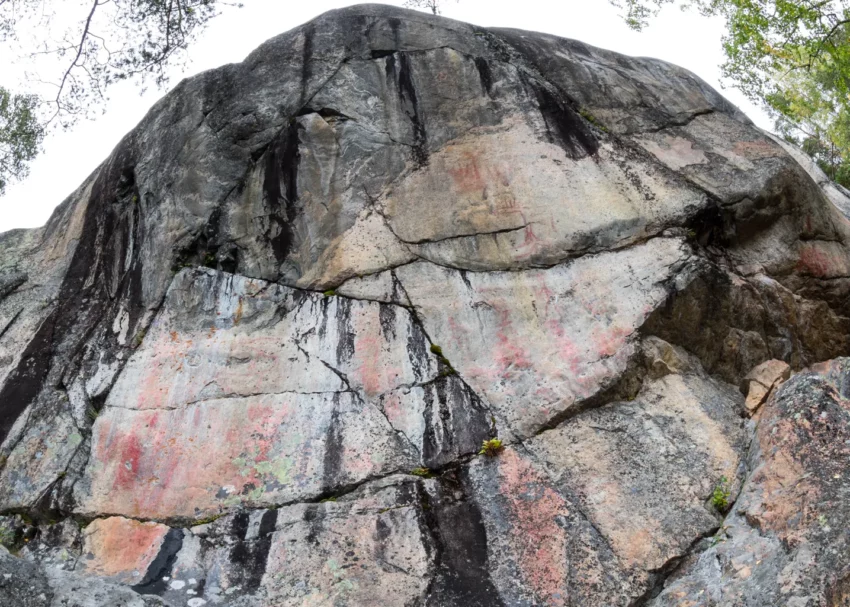Introduction to Astuvansalmi Rock Paintings
The Astuvansalmi rock paintings, situated in Ristiina, Mikkeli, in the region of Southern Savonia, Finland, represent a significant prehistoric site. Found on the shores of Lake Yövesi, part of the expansive Lake Saimaa, these paintings provide invaluable insights into the spiritual and daily lives of the region’s ancient inhabitants.
Get your dose of History via Email
Discovery and Geographic Context
Discovered officially in 1968 by Finnish archaeologist Pekka Sarvas, the Astuvansalmi paintings, although previously known to locals, have since drawn considerable academic interest. The paintings are positioned 7.7 to 11.8 meters above the current water level of Lake Saimaa, indicating that the lake level was significantly higher at the time they were created.
Description of the Paintings
The rock on which the paintings are made is notable for its resemblance to a human head, a likeness most apparent during the winter when viewed from the frozen surface of the lake. This natural formation likely contributed to the site’s selection for spiritual or ceremonial purposes. The paintings themselves, numbering around 70, include depictions of moose, human figures, hands, animal tracks, boats, and geometric figures, along with images thought to represent fish and dogs.
Chronology and Archaeological Findings
The oldest of these paintings date back to approximately 3000–2500 BC, located at the highest points on the rock. Changes in the water level, particularly a rapid drop caused by the landslide of Vuoksi, have influenced the placement and preservation of these artworks. Subsequent paintings were created from boats as the water level gradually receded.
In addition to the paintings, the site has yielded various archaeological artifacts, including amber statuettes of deities such as Ukko and Akka, animal-themed jewellery, and arrowheads dating from 2200–1800 BC and 1300–500 BC. Nearby, Stone Age settlements dating from around 3300–2800 BC have been discovered in Heiniemi.
Interpretation of Motifs
The motifs in Astuvansalmi’s rock paintings are rich in symbolism. The frequent depiction of moose, a crucial prey animal, suggests a cosmological significance, possibly representing the center of the universe in local belief systems. The orientation and styling of these moose figures, with some marked with dots on their hearts and most facing west, hint at ritualistic importance.
The human figures, occasionally depicted with shamanistic attributes, suggest a connection to the broader Siberian and North European shamanistic traditions. These traditions often feature the sun as a celestial deer or moose, reinforcing the spiritual and cultural significance of these animals. The rare depiction of a female figure with a bow, identified as the mythic “Tellervo” from Kalevala mythology, underscores the sacred nature of the site and its depictions.
Conclusion
The Astuvansalmi rock paintings are a window into the spiritual life and environmental adaptation of Finland’s ancient inhabitants. Through careful preservation and continued archaeological study, they offer profound insights into the shamanistic practices and cosmological views of prehistoric Finnish societies.
Sources:

